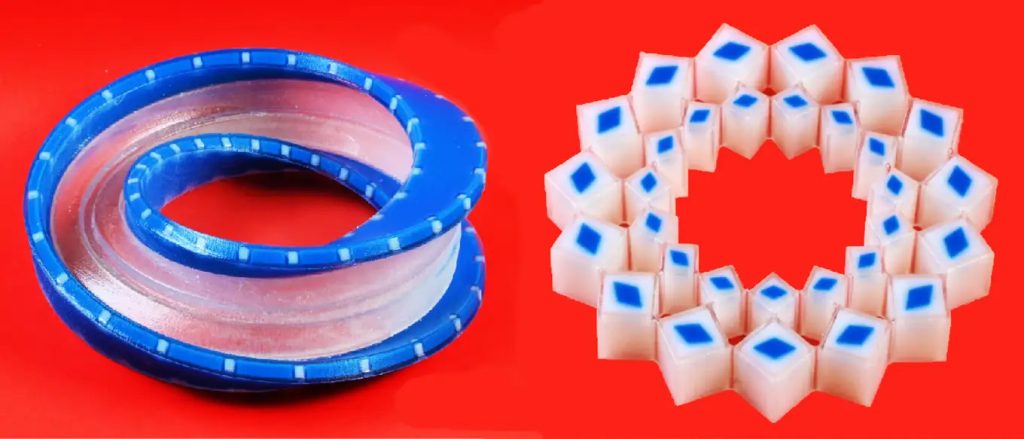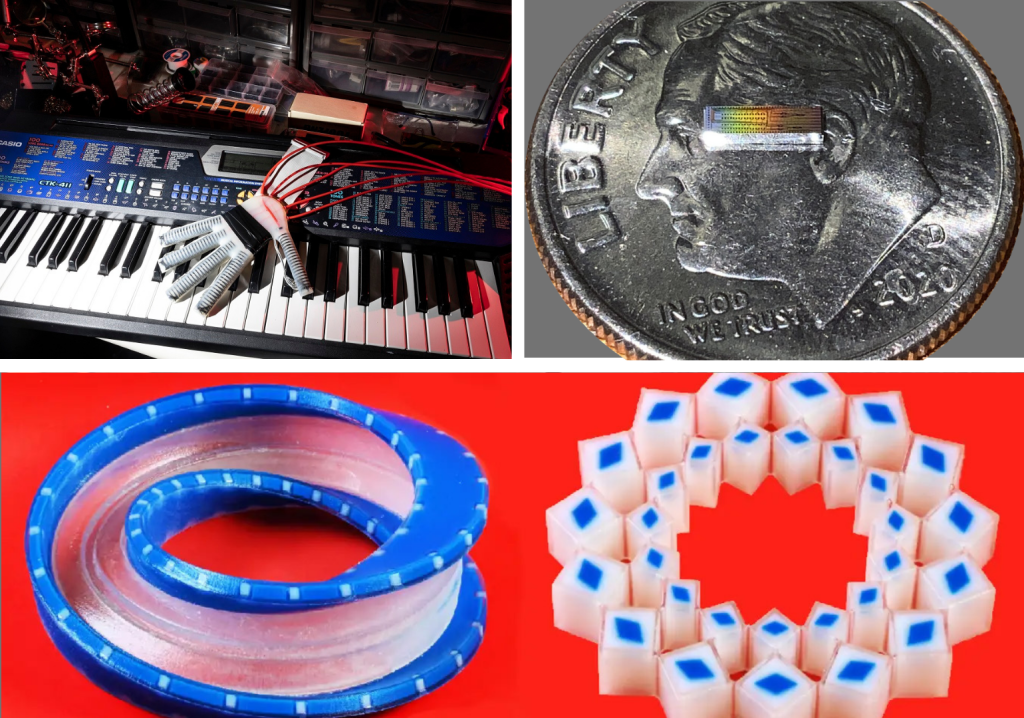Mechanical memory, breaking the “bandwidth bottleneck”, and a robotic hand. Here are three of the latest tech innovations from across the world.
“Frustrated” metamaterials
A new type of metamaterial developed by the University of Amsterdam and France’s ENS de Lyon uses a “frustrated” design to form objects that retain mechanical memory.
The researchers structured the materials as non-orientable objects that always have a point that does not deform under pressure, such as a ring of hinged squares that rotate in opposite directions.

Changing the position at which the object’s zero deformation point ends up permits the object to store information and even act as a mechanical computer.
“These materials naturally want to be ordered, but something in their structure forbids the order to span the whole system and forces the ordered pattern to vanish at one point or line in space,” said Corentin Coulais of the University of Amsterdam.
“There is no way to get rid of that vanishing point without cutting the structure, so it has to be there no matter what.”
High-speed data
A tiny chip developed by engineers at the US’s Columbia University is capable of transmitting data with incredible speed and efficiency, potentially breaking the “bandwidth bottleneck” that limits the transfer of data between nodes in high-performance computers.
The integrated photonic chip uses a technique called wavelength-division multiplexing to send independent streams of data simultaneously using hundreds of distinct wavelengths of light generated by a single laser.

While the system transfers more data, it does not use proportionally more energy.
“We recognised that these devices make ideal sources for optical communications, where one can encode independent information channels on each colour of light and propagate them over a single optical fibre,” said Professor Keren Bergman.
“What this work shows is a viable path towards both dramatically reducing the system energy consumption while simultaneously increasing the computing power by orders of magnitude.”
Piano assistant
[embedyt] https://www.youtube.com/watch?v=1C97qcm4ukU[/embedyt]
A soft robotic hand developed at the US’s Florida Atlantic University will help people who have suffered strokes and other neurotraumas undertake tasks requiring manual dexterity, such as playing the piano.
The glove combines artificial intelligence with tactile sensors and soft actuators to tell the difference between the correct and incorrect movements required to play a song on a keyboard.
Acting as an exoskeleton, the glove guides the wearer’s fingers to help recover the fine finger movements necessary to play a song — which, during the technology’s trials, was “Mary Had a Little Lamb”.
“Playing the piano requires complex and highly skilled movements, and relearning tasks involves the restoration and retraining of specific movements or skills,” Professor Erik Engeberg said.
“Our robotic glove is composed of soft, flexible materials and sensors that provide gentle support and assistance to individuals to relearn and regain their motor abilities.”
The data gathered by the glove could one day be used by doctors to develop therapeutic plans for their patients, introducing more complex songs to target specific weaknesses.
